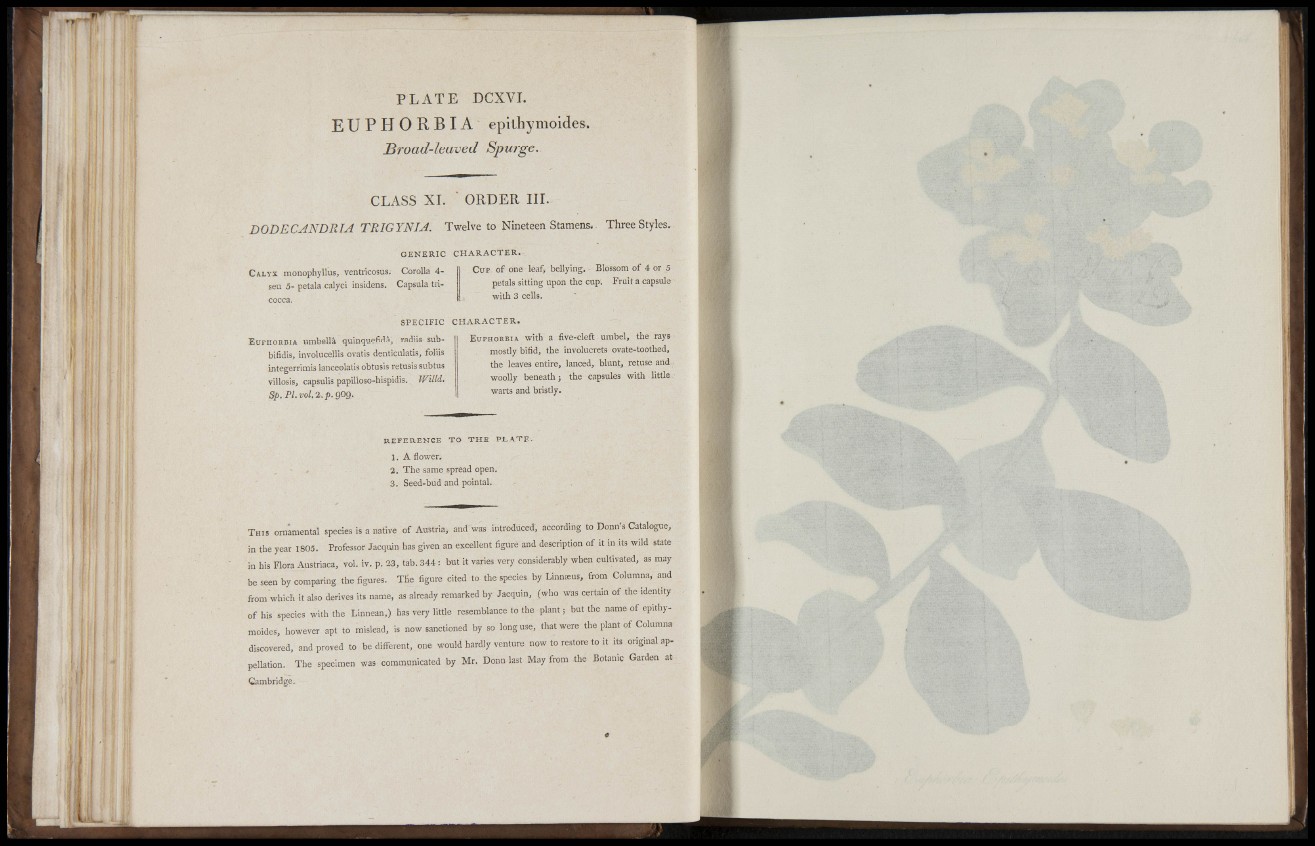
P L A T E DCXVI.
E U P H O R B I A epilhymoides.
Broad-leaved Spurge.
CLASS XL ORDER III.
DODECANDRTA TRIGYNIA. Twelve to Nineteen Stamens. Three Styles.
GENERIC CHARACTER.
CALYX moiiophyllus, ventricosus. Corolla 4-
seu 5- petala calyci insidens. Capsula tricocca.
CUP of one leaf, bellying. Blossom of 4 or 5
petals sitting upon the cup. Frnit a capsule
with 3 cells.
SPECIFIC CHARACTER.
EUPHORBIA umbella quinquefida, radiis subbifidis,
involucellis ovatis denticnlatis, foliis
integerrimis lanceolatis obtusis retusis subtus
villosis, capsulis papilloso-hispidis. Willd.
Sp. PI. vol. 2. p . 909.
EUPHORBIA with a five-cleft umbel, the rays
mostly bifid, the involucrets ovate-toothed,
the leaves entire, lanced, blunt, retuse and
woolly beneath; the capsules with little
warts and bristly.
REFERENCE TO THE PLATE.
1. A flower.
2 . The same spread open.
3. Seed-bud and pointal.
THIS ornamental species is a native of Austria, and was introduced, according to Bonn' s Catalogue,
in the year 1805. Professor Jacquin has given an excellent figure and description of it in its wild state
in his Flora Austriaca, vol. iv. p. 23, tab. 344 : but it varies very considerably when cultivated, as may
be seen by comparing the figures. The figure cited to the species by Linnaeus, from Columna, and
f r om which it also derives its name, as already remarked by Jacquin, (who was certain of the identity
of his species with the Linnean,) has very little resemblance to the plant; but the name of epithymoides,
however apt to mislead, is now sanctioned by so long use, that were the plant of Columna
discovered, and proved to be different, one would hardly venture now to restore to it its original appellation.
The specimen was communicated by Mr. Bonn last May from the Botanic Garden at
Cambridge.